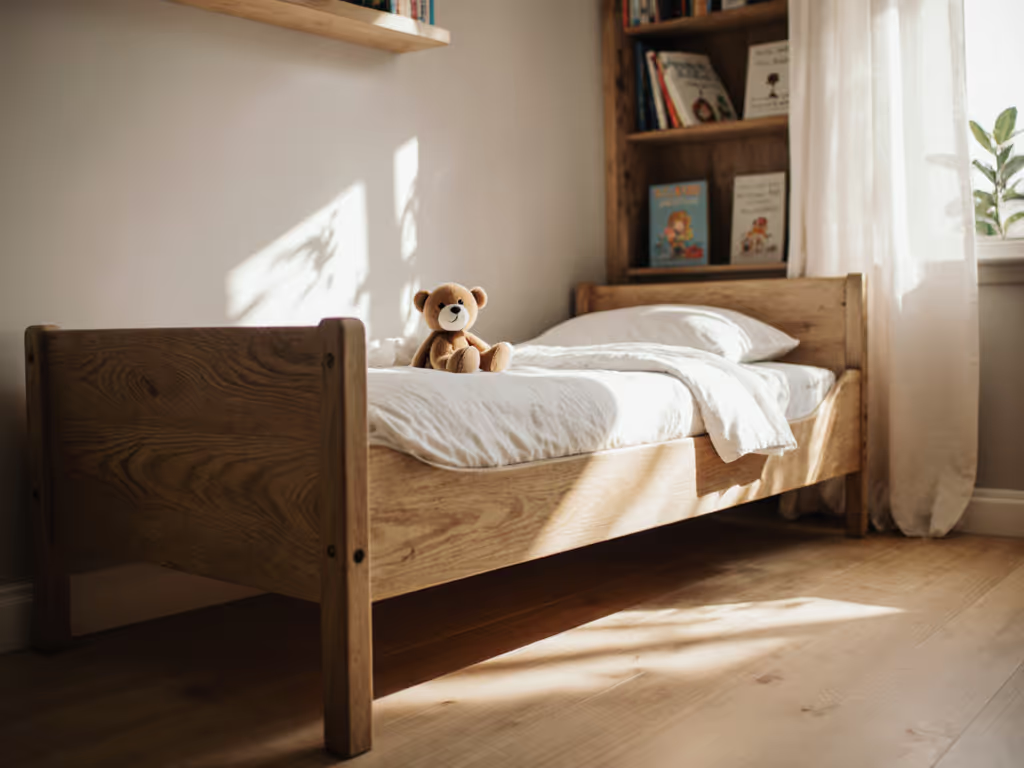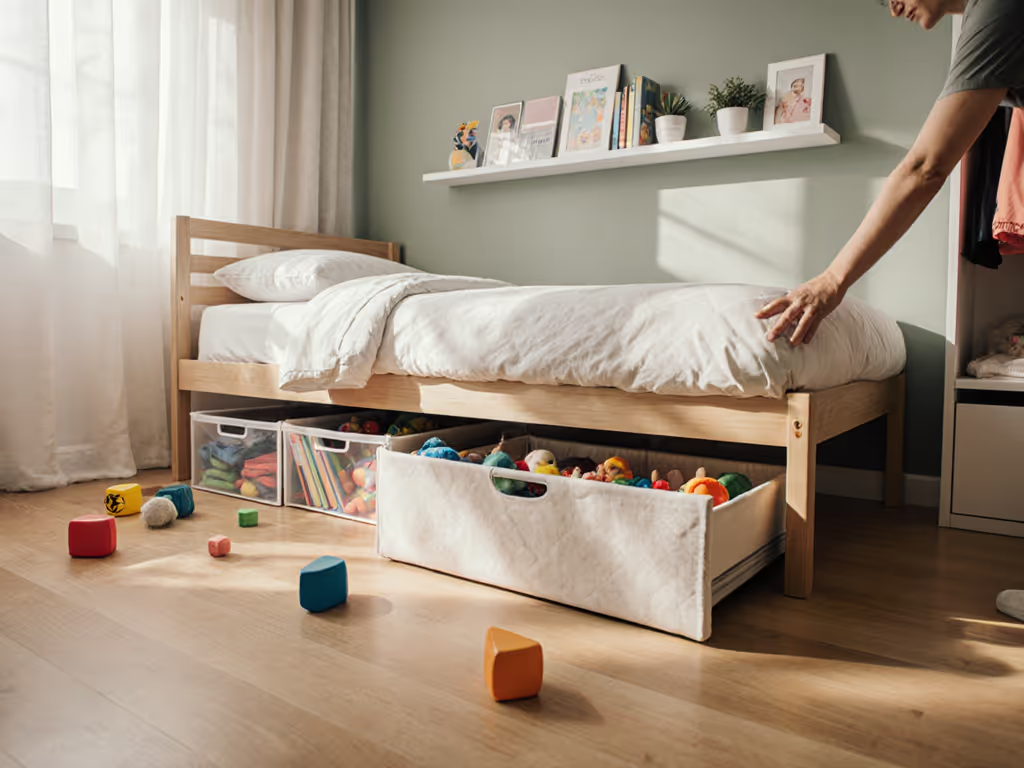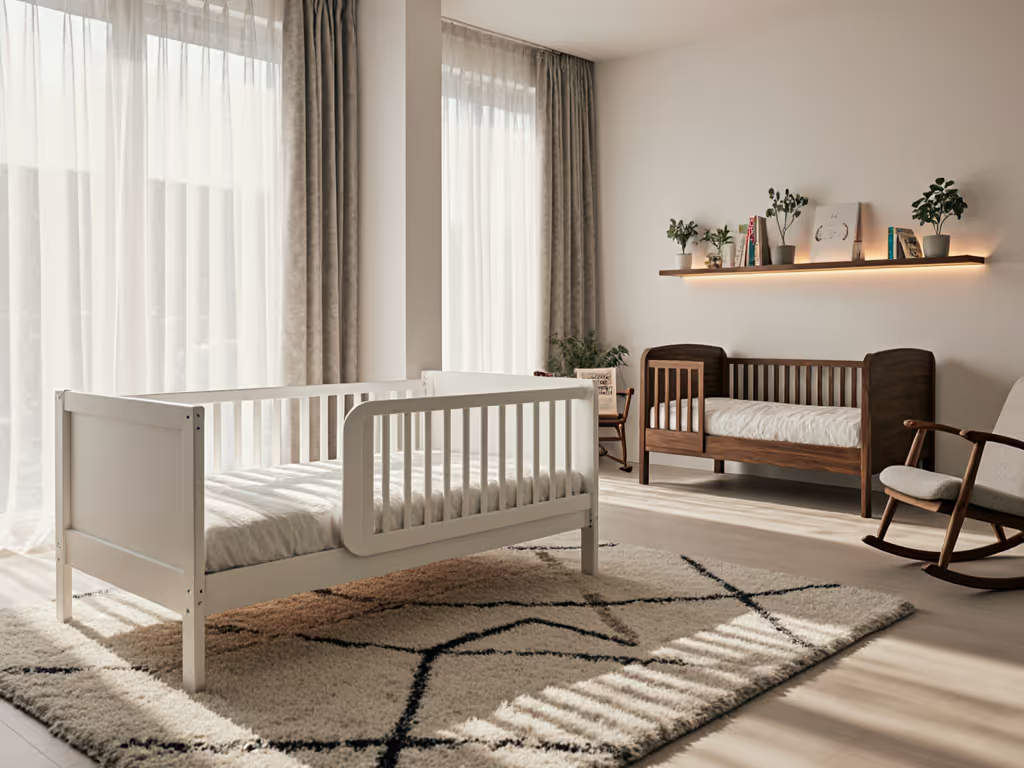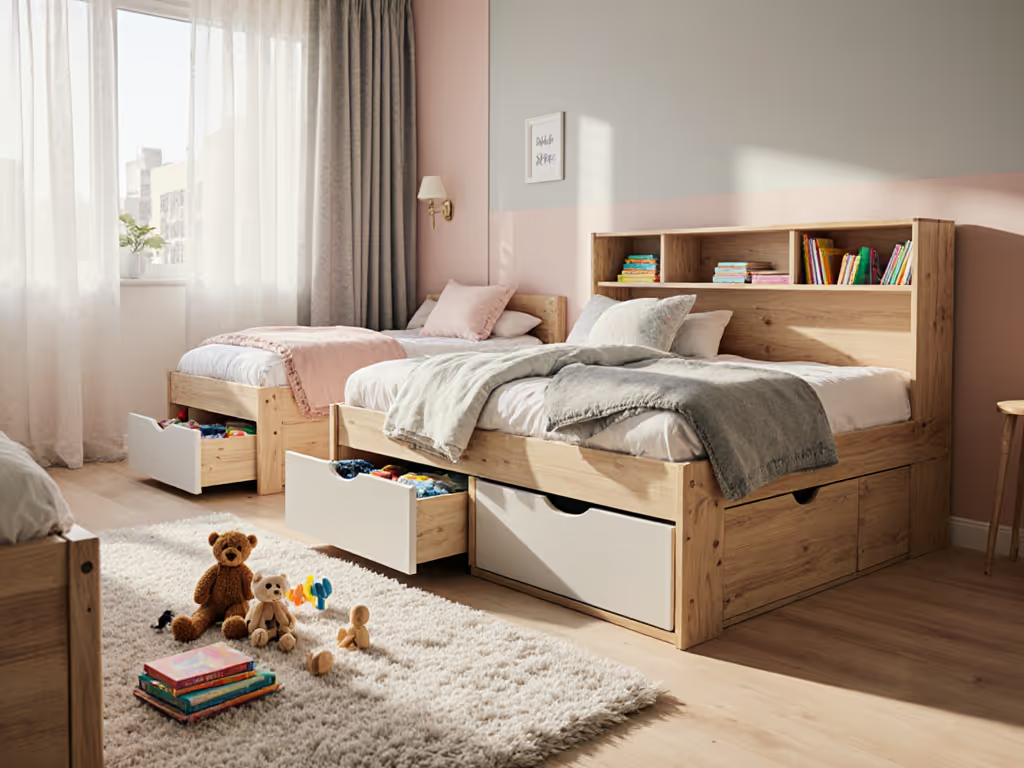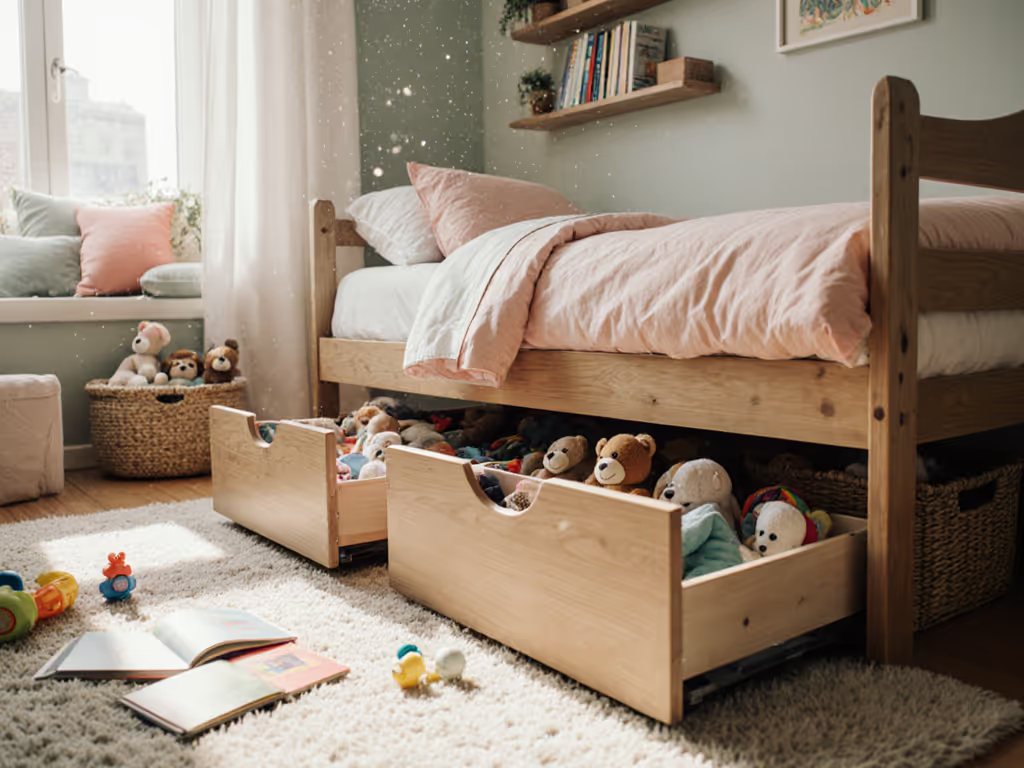
Toddler Bed Materials Guide: Choose Safe and Durable Options
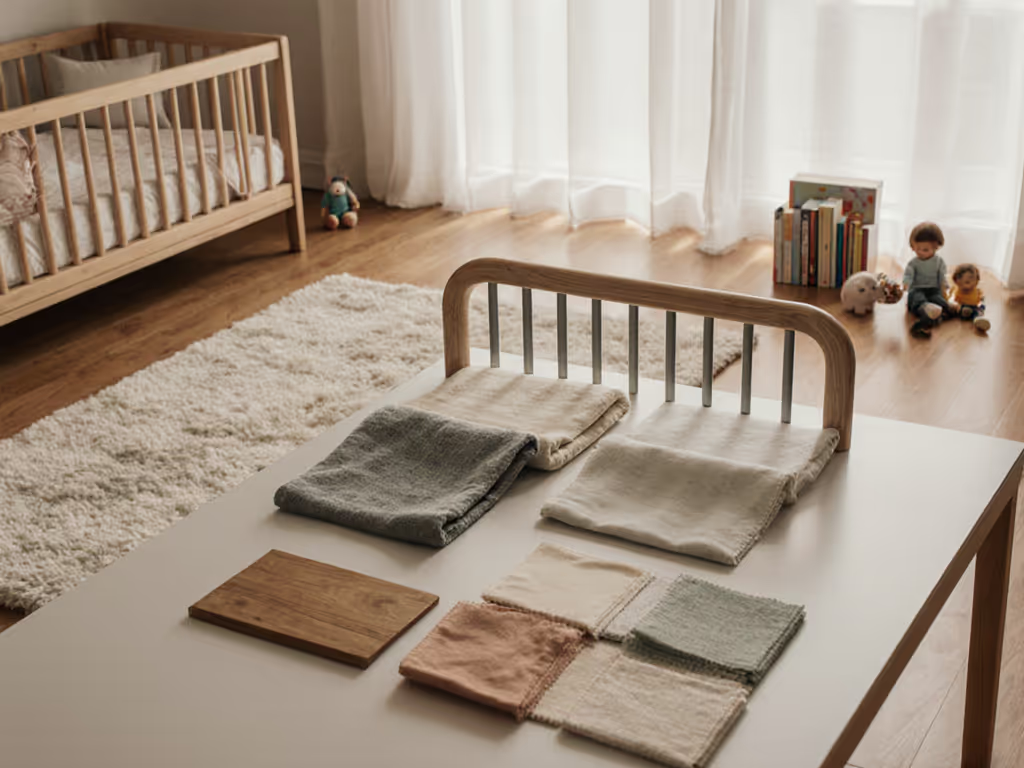
Did you know that toddlers spend nearly half their day sleeping or resting? The right bed can make all the difference for comfort and safety as your child grows. Picking a toddler bed is more than just a style choice. It means evaluating room space, safety rules, durability, and even the materials touching your child's skin. Smart planning helps you create a cozy spot where your child sleeps soundly and you enjoy peace of mind.
Quick Summary
| Key Point | Explanation |
|---|---|
| 1. Measure room dimensions carefully | Accurate measurements ensure the toddler bed fits without overcrowding the space, allowing for safe movement around it. |
| 2. Prioritize safety features | Guardrails and smooth edges are essential for preventing falls and injuries during the transition from crib to bed. |
| 3. Choose durable materials | Hardwoods like oak or maple provide longevity and resistance to wear, making them ideal for energetic toddlers. |
| 4. Look for eco-friendly options | Selecting non-toxic materials and finishes protects your child's health and supports environmental sustainability. |
| 5. Verify manufacturer certifications | Ensure that the toddler bed complies with safety standards by checking for appropriate certifications and documentation. |
Step 1: Assess Room Requirements and Space Limitations
Before selecting a toddler bed, you'll want to understand precisely how the new sleeping arrangement will fit into your child's current room. Measuring and planning are your first critical steps toward creating a comfortable and functional bedroom space.
Start by grabbing a tape measure and carefully recording your room's total dimensions. Most toddler beds are compact and designed to occupy minimal floor space—typically accommodating a standard 28 x 52 inch mattress similar to a crib mattress. This means they work beautifully in smaller bedrooms or shared living areas without overwhelming the available space.
While measuring, pay attention to other furniture placement. Ensure you leave enough walking room around the bed and consider proximity to windows, electrical outlets, and potential safety hazards. A good rule of thumb is maintaining at least two feet of clear space around the bed's perimeter for easy movement and accessibility.
Pro Tip: Create a quick room layout sketch before purchasing. This visual planning can help you understand how the new bed will integrate with existing furniture and room configuration.
Remember that toddler beds are intentionally designed to be space efficient. They provide a smooth transition from cribs while maintaining a small footprint perfect for growing children in compact living environments. Your thoughtful assessment now will prevent frustrating furniture rearrangements later.
Once you've measured and confirmed your space requirements, you're ready to explore specific toddler bed materials and styles that will complement your room's dimensions and design.
Step 2: Identify Essential Safety and Durability Criteria
Choosing a toddler bed isn't just about looks or style. Your primary focus should be ensuring a safe sleeping environment that protects your child and withstands the energetic exploration of growing children.
The U.S. Consumer Product Safety Commission provides clear guidelines that should drive your selection process. According to their standards, guardrails are non negotiable. These protective barriers must extend at least five inches above the mattress to prevent accidental rolling and potential falls. This simple requirement can significantly reduce injury risks during your toddler's transition to an independent sleeping space.
Structural integrity is another critical consideration. The ASTM F1821-19e standard mandates that toddler beds must be free from hazardous sharp points and edges. Run your hands along potential bed frames checking for any protruding screws, rough surfaces, or potential pinch points. Smooth rounded corners and securely fastened components are your best indicators of quality construction.
Pro Tip: Always check for current safety certifications. Reputable manufacturers will clearly display compliance with national safety standards.
Material durability matters as much as immediate safety. Wood frames with solid construction typically outlast cheaper alternatives. Look for beds made from kiln dried hardwoods or sturdy engineered materials that can withstand jumping toddlers and years of active use. Reinforced joints and quality hardware suggest a bed that will grow with your child.
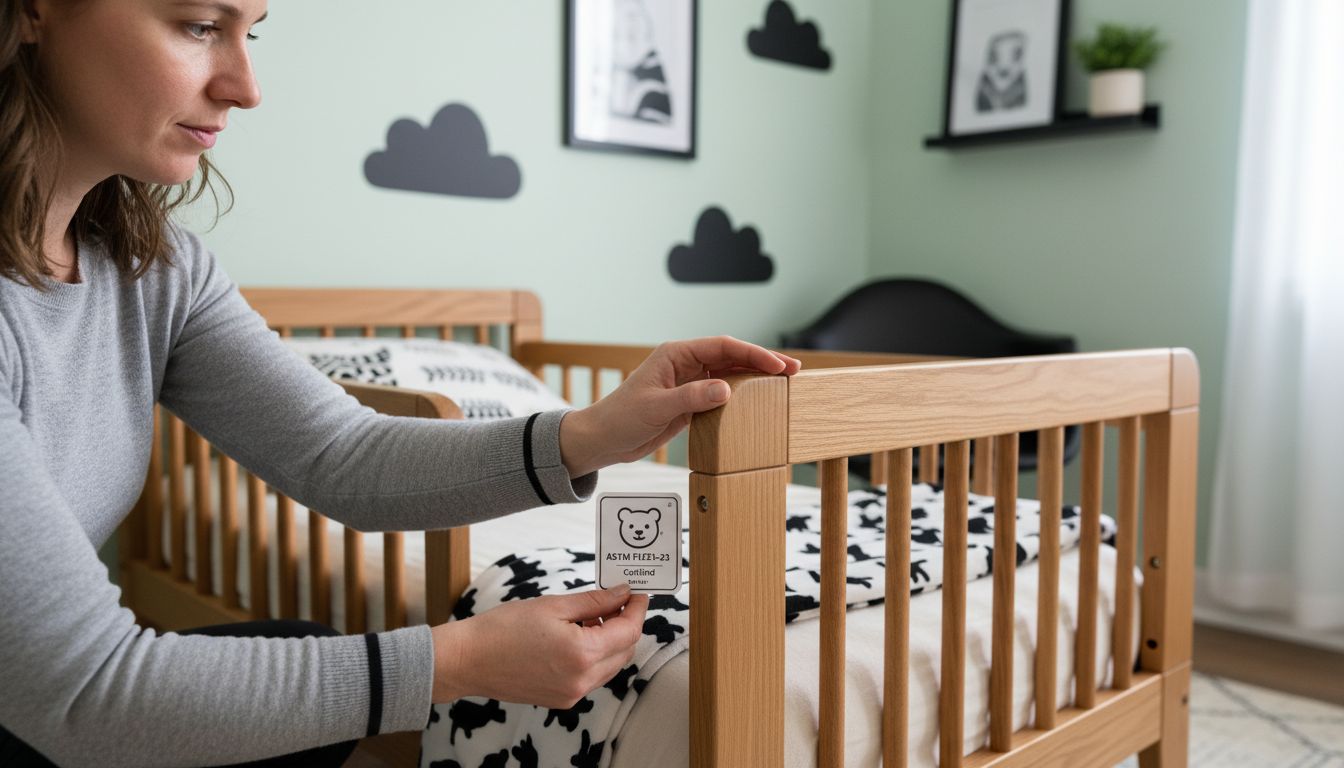
Your goal is finding a bed that balances safety engineering with practical design. By prioritizing these essential criteria, you're creating a secure sleeping environment that gives both you and your toddler peace of mind.
Step 3: Compare Popular Toddler Bed Materials Effectively
Navigating the world of toddler bed materials can feel overwhelming. Your goal is to find a material that balances safety, durability, aesthetics, and practicality for your child's sleeping space.
Wood remains the gold standard for toddler beds. Solid hardwoods like oak, maple, and birch offer exceptional strength and longevity. These materials resist wear and tear while providing a classic aesthetic that can grow with your child's changing bedroom style. Hardwood beds typically feature smooth finishes that prevent splinters and offer natural resistance to bacteria and moisture.
Metal beds present an alternative with their lightweight construction and sleek modern appearance. They often weigh less than wooden counterparts making room rearrangements easier. However metal requires careful inspection to ensure rounded edges and smooth connections that prevent potential injury risks.
Plastic toddler beds represent the budget friendly option. They are lightweight, easy to clean, and often come in vibrant colors that appeal to young children. The trade off is typically reduced durability compared to wood or metal alternatives. These beds work well for temporary use or as secondary sleeping arrangements.
Pro Tip: Regardless of material, always prioritize beds with rounded edges and sturdy construction over aesthetic preferences.
Consider your specific needs when comparing materials. Wooden beds offer longevity. Metal provides modern styling. Plastic delivers affordability. Your choice should reflect your budget, room design, and how long you anticipate using the bed.
By understanding the strengths of each material type, you can make an informed decision that creates a safe and enjoyable sleeping environment for your growing toddler.
Here's a comparison of the most common toddler bed materials:
| Material | Durability | Safety Features | Typical Appearance |
|---|---|---|---|
| Solid Wood | Very High | Rounded edges<br>Non-toxic finishes | Classic<br>Neutral colors |
| Metal | Moderate/High | Smooth connections<br>Sturdy frame | Modern<br>Metallic finishes |
| Plastic | Moderate | Lightweight<br>No sharp edges | Bright colors<br>Playful designs |
Step 4: Select Eco-Friendly and Non-Toxic Options
Protecting your child goes beyond immediate safety. Choosing an environmentally responsible toddler bed means understanding the potential chemical exposures lurking in seemingly innocent furniture materials.
The U.S. Consumer Product Safety Commission provides critical guidance for parents seeking non toxic bedding options. Their regulations mandate strict standards for surface coatings and materials used in children's furniture. When shopping, look for beds with certifications indicating lead free paints and finishes that eliminate potential health risks.
Natural wood materials offer an excellent starting point for eco conscious parents. Seek out beds crafted from sustainably harvested woods like bamboo or maple. These materials not only reduce environmental impact but also provide inherent resistance to bacteria and moisture. Avoid composite woods that might contain harmful adhesives or formaldehyde based chemicals.
Paint and finish selection matters tremendously. Water based finishes with low volatile organic compound levels represent the gold standard for child friendly furniture. These coatings provide protection without releasing toxic gases that could compromise your toddler's respiratory health.
Pro Tip: Request material safety data sheets from manufacturers to understand exactly what chemicals are used in bed production.
Consider additional eco friendly features like non toxic glues, naturally derived wood sealants, and manufacturing processes that minimize environmental footprint. Your choice impacts not just your child's immediate health but contributes to broader sustainability efforts.
By prioritizing non toxic materials and responsible manufacturing practices, you create a safer sleeping environment that supports both your child's well being and environmental conservation.
Step 5: Verify Material Quality and Manufacturer Standards
Navigating the complex world of toddler bed manufacturing standards requires a strategic approach. Your mission is to become a savvy detective who can distinguish between legitimate safety certifications and marketing claims.
The Consumer Product Safety Commission sets clear guidelines for toddler bed manufacturers. One critical requirement is the Children's Product Certificate (CPC), which serves as your primary indicator of compliance. This document confirms that the bed meets rigorous safety standards and has been tested for potential hazards.
The ASTM F1821-19e standard provides a comprehensive framework for evaluating bed quality. This standard covers everything from structural integrity to the absence of sharp edges. When reviewing potential beds, look for explicit references to this standard on product documentation or manufacturer websites. Manufacturers committed to safety will proudly display their compliance with these regulations.
Inspect manufacturer documentation thoroughly. Request detailed material specifications that outline wood sourcing, treatment processes, and chemical compositions. Reputable manufacturers will provide transparent information about their production methods and material origins.
Pro Tip: Contact manufacturers directly if you cannot find comprehensive safety documentation. Legitimate companies will be happy to provide detailed certification information.
Pay attention to third party testing certifications. Independent laboratory tests offer an additional layer of verification beyond manufacturer claims. Look for beds that have been evaluated by recognized safety organizations and can provide comprehensive testing reports.
Your careful research ensures you select a toddler bed that meets the highest safety and quality standards possible. This diligence protects your child and provides peace of mind during their exciting transition to a big kid bed.
Find the Perfect Toddler Bed That Matches Your Safety and Space Needs
Choosing the right toddler bed can feel overwhelming with all the options and safety considerations. The article highlights key challenges like ensuring guardrails meet safety standards, selecting durable materials that stand up to active toddlers, and fitting a functional bed into limited room space. You want a bed that is not only safe but also eco-friendly and designed to last while blending seamlessly into your child’s bedroom.
At City Toddler Beds, we understand these concerns and offer expert guidance to help you navigate everything from material quality to non toxic finishes and practical room layouts. Our resources focus on practical advice to give your family peace of mind and create a cozy, secure sleeping environment. Explore our comprehensive Toddler Bed Materials Guide and start planning the perfect transition from crib to big kid bed today.
Don't wait to secure your child's comfort and safety. Visit City Toddler Beds now to access trusted information and make an informed decision with confidence.
Frequently Asked Questions
What materials are the safest for toddler beds?
Solid wood is considered the safest material for toddler beds due to its durability and resistance to wear. Choose beds made from hardwoods like oak or maple, as they typically have smooth finishes, reducing the risk of splinters and injuries.
How can I ensure a toddler bed is durable?
To ensure durability, look for toddler beds with reinforced joints and high-quality materials, such as solid wood or metal. Inspect for features like sturdy hardware and non-toxic finishes, which can enhance the lifespan of the bed.
What should I know about the safety standards for toddler beds?
Toddler beds must adhere to strict safety standards that include guardrails and smooth edges to prevent injuries. Always check for a Children’s Product Certificate (CPC) or references to the ASTM F1821-19e standard when assessing a toddler bed's safety compliance.
Are metal toddler beds safe for my child?
Yes, metal toddler beds can be safe if they are constructed with rounded edges and smooth joints to prevent injury. Ensure the bed has been tested for safety and meets the same standards as wooden options to provide a secure sleeping environment.
How do non-toxic finishes impact the safety of a toddler bed?
Non-toxic finishes are crucial as they reduce the risk of harmful chemical exposure to your child. Look for water-based finishes with low volatile organic compounds (VOCs), as these provide a safer sleeping space without compromising aesthetic appeal.
Can I find eco-friendly toddler bed options?
Yes, many toddler beds are eco-friendly, particularly those made from sustainably sourced woods and non-toxic materials. Seek beds crafted from solid wood with certifications indicating they are free from harmful chemicals to ensure a safe and environmentally responsible choice.


